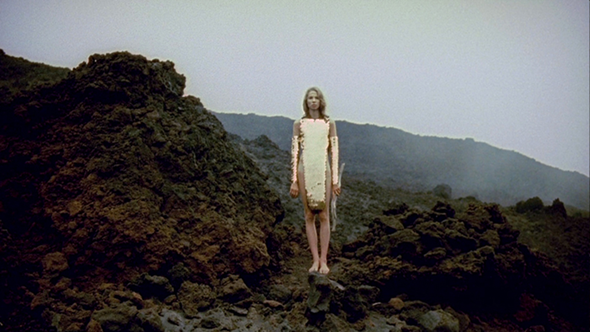
A reiterative carousel
The artificial, repetition, modernist architecture, dreamlike image sequences reminiscent of Surrealism. Strong and elegant female figures, whose traditional female attributes are enhanced. FILIPA RAMOS on the post-feminist approach of the Austrian-born artist URSULA MAYER.
Imagine yourself immersed in a severe, sometimes even harsh, environment, yet which is also very attractive, refined in every single detail. Nothing – not even the minutest element – is there by chance. It has the feeling of »mise-en-scène«: even when observing a landscape, there is always something that gives it the appearance of scenery. Despite being aroused by the overwhelming beauty and sensuous pleasure provided by the scene, you are still fully aware that nothing of what you are watching is natural. This presentation of artificiality, perceived more by instinct than by anything tangible, is a constant reminder of your condition as a spectator. Yet, somehow, you are taken deep inside the stream of images, and you often find yourself witnessing something that is somehow familiar. Is this the first time you are seeing it? Or have you seen it before? Are these demanding, charged images tiring you? Are you feeling strangely displaced and not in control of time? Such an ambivalent condition is commonly triggered by the work of Ursula Mayer.
Born in Austria, now living and working in London, Mayer works with different media, including video, photography, performance, sculpture and film, which she often combines in all-encompassing installations. In recent years, Mayer’s works – especially her films and videos – have become widely recognized through their presentation in major international venues. In the context of moving images, repetition is an ancient pattern used to articulate scenes and shots and to relate subjects through actions, spaces and objects. Every time that we witness something being repeated, our mind concentrates not only on what it already knows, it also develops new interpretations of the given scene or object. The result is a series of variations on a theme.
Mayer’s use of repetition often seems to originate from a dream-like logic, close to the one used by the Surrealists. From there, she develops a personal style in which reiteration is used to make the spectator conscious of his or her condition – something along the lines of: »I, the viewer, am prevented from being completely entertained since I have become aware that I am a viewer through recognizing images that I have already seen.« In spite of this self-awareness, Mayer’s repetitions also immerse the audience in intense moments comprising sounds, images and patterns whose sequence may change over the course of the film. There are some moments in which it seems as if the motion picture moves like an endless carousel, around and around itself, avoiding the linear, vertical logic of the movement of film.
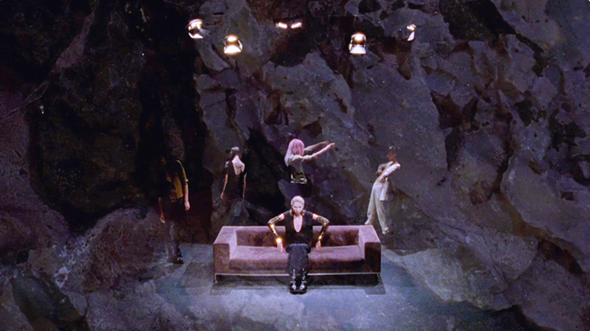
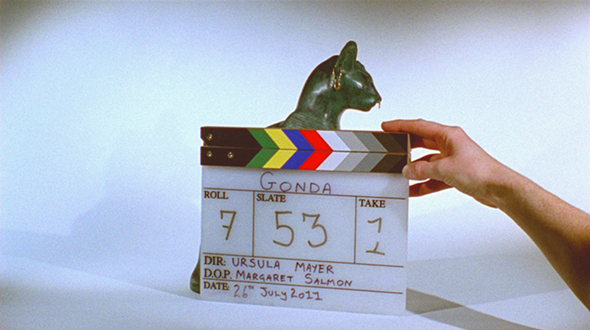
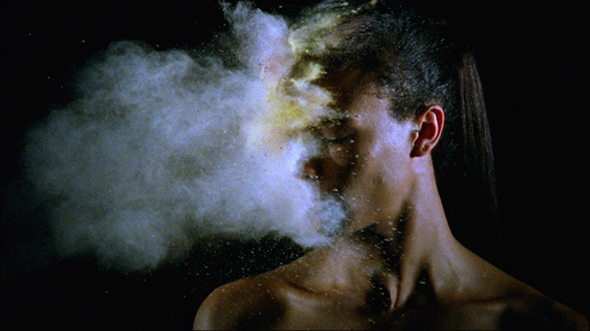

16 mm transfer on HD video, 30 min.
Courtesy Juliette Jongma, Amsterdam
Her most recent work, Gonda (2012), owes a considerable part of its dynamism and intensity to repetition. The film is inspired by the play Ideal, written in 1934 by Russian-American thinker Ayn Rand (1905- 1982). Rand is known for having developed Objectivism, a philosophical system advocating rationalism and liberalism for the promotion of a lay, individualistic and entrepreneurial society. »Gonda« is the surname of the main character of the play, Kay Gonda, a celebrity who commits a murder and seeks refuge with six of her fans, who let her down one after the other. In the film, the edification of a strong, singular conscience and appearance of the self – an idea promoted by Rand – gives way to a cacophony of fragmented, alternating images, sounds and voices. The result is a multi-sided, colourful figure that rotates on its axis, presenting different and unexpected scenes each time. The film itself revolves around a central character, an androgynous figure who in some scenes is shown dressed in a luxurious golden gown and escaping into a barren landscape, which is the closest visual proximity to the referenced text. The original text serves merely as an allusion, because the film’s script, which is its central feature, was conceived by writer Maria Fusco. It was developed through a series of workshops intended to direct art writing towards the production of a screenplay, which conditioned and determined the whole development of the film. Repetitively enunciated punctuation marks – »comma«, »full stop« – act as a slate. They divide scenes through the conjunction of sounds and pictures. Often, the same still images appear with a similar cadence; in alternation, an Egyptian cat, a leather cap, and a stone in bright tonalities, beautiful oranges and greens that paint the screening room with a veil of monochromatic colour each time they appear.
Another film, The Lunch In Fur (2008), follows three graces who, as we come to understand, are three women late in their lives: Meret Oppenheim, Josephine Baker and Dora Maar raise the possibility of performing modernism by acting as icons of themselves and by using objects to activate remembrance. They repeat their actions several times, as if touching a sculpture, an egg or a stone could make its beholder more real. Gradually, these gestures become familiar, triggering viewer recognition.
In the film Interiors (2006), two characters, an elderly woman and a young woman with a very similar physiognomy – perhaps the same person seen at two different times in her life – repeat gestures and interactions within the domestic space of a beautiful modernist house with a rotating replica of an elliptical sculpture by British artist Barbara Hepworth. In reality, the film was shot in the former residence of the architect Ernő Goldfinger, which was a gathering point for artists and creators in North London in the 30s. These allusions to the consolidation of modernist ideals and aesthetic values in space and time add an additional depth to the work. The movement of the elliptic sculpture, which rotates in a hypnotising way in time with the movement of the two females around the house, gives the film its centripetal dynamic and its rhythm. As a result, beginning and end dissolve into circular, continuously evolving action.
The contemporary relevance of Mayer’s filmic work relies exactly an equilibrium between certain sensibilities shared by others in her generation and a highly personal approach to subjects and objects. Her research is largely focused on her contemporaries’ backgrounds, and in this sense she also belongs to the generation that, as Mark Lewis put it, sees »modernity as our antiquity«. Mayer’s post-feminist approach masterly constructs strong female personas through the exaltation of traditional, almost conformist, feminine values and attributes in glamorous, elegant contexts. In certain moments, as in the case of Gonda, Mayer goes beyond her conventional presentation of the female body by calling a transgender model into the scene, casting sexual identity as irrelevant. Gonda also provides the setting for a complex reflection about the role of images in the contemporary imagination as well as their value when mediated by the advertising and popular culture industries; several times, the film recreates a fashion shoot, thus echoing some of the Nouvelle Vague’s best known moments, such as in Michelangelo Antonioni’s Blow Up (1966) or Jean-Luc Godard and Jean-Pierre Gorin’s Tout va bien (1972).
Mayer’s propensity to hybridise references and sources, to juxtapose erudite philosophical concepts with popular imagery and to combine highly aestheticised depictions with the enunciation of dense scripts indicates that her approach to art making could be confused with the all-encompassing jargon of post-modernism. However, her work reaches far beyond those tendencies, as it is marked neither by nostalgia, nor by the use of found fragments of history or lost objects from the past. Instead, it represents the edification of a new world, in which allusions and inventions are combined in endless iterations, though with subtle variations, as through a reiterative carousel.
FILIPA RAMOS is an art critic based in Milan and London. She coordinates the project The most beautiful Kunsthalle in the world, at Fondazione Antonio Ratti, Como.
URSULA MAYER, born 1970 in Austria. Lives in London. Exhibitions: Gonda, Galerie Juliètte Jongma, Amsterdam (solo) (2012); Performa 11, New York; Short Stories, Sculpture Center, New York; Prospectif Cinema, Centre Pompidou, Paris (2011); 100 Years (version #3), Garage, Moscow; Films by U. Mayer, Fondazione Pastificio Cerere, Rome (solo); Last Hours of Ancient Sunlight, Monitor, Rome (solo); Projections, Bonniers Konsthall, Stockholm (2010).
Represented by Galerie Juliètte Jongma, Amsterdam; Galerie Krobath, Vienna; Monitor, Rome

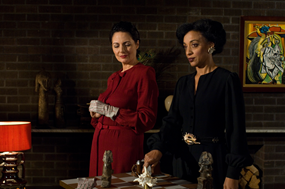
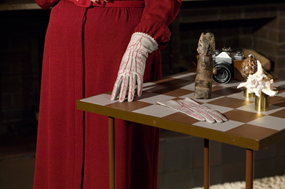

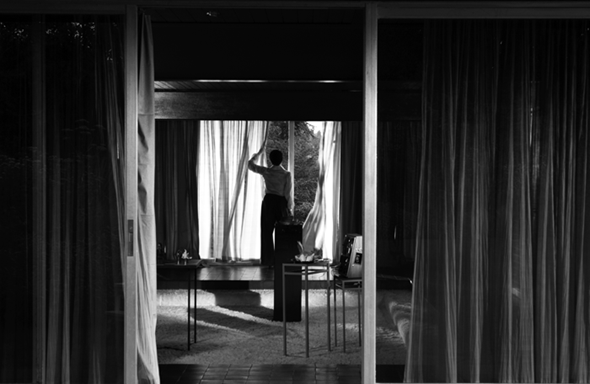
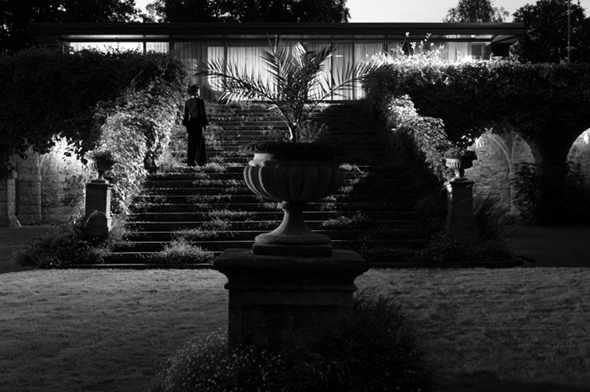
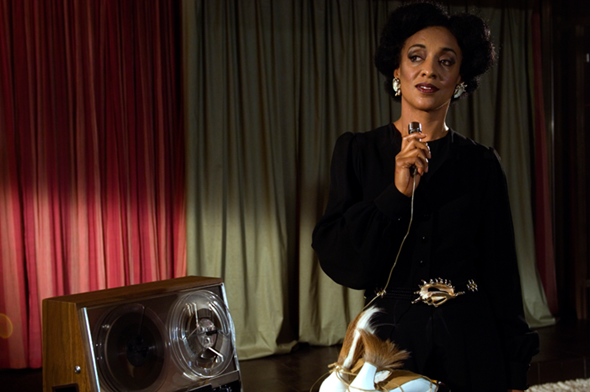
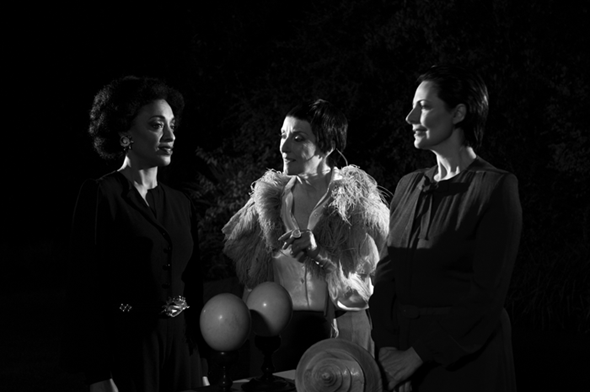
16mm film, color and b&w, sound, 8 min.
Courtesy the artist, Monitor, Rome and Juliette Jongma, Amsterdam
Photos: Tim Brotherton
